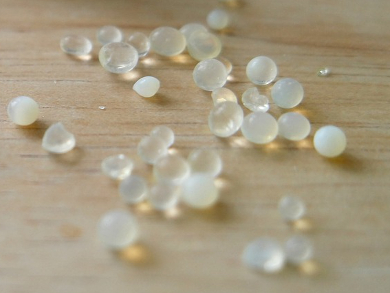Hydrogels are crosslinked polymer networks which can absorb large amounts of water or other solvents. They are used, for example, as superabsorbents for water, to remove compounds such as dyes from solution, or for drug delivery. Another possible field of application is the removal of harmful heavy metal ions from wastewater.
Liang-Yi Wang and Meng-Jiy Wang, National Taiwan University of Science and Technology, Taipei, have developed environmentally friendly composite hydrogels made from poly(vinyl alcohol) (PVA) and carboxymethyl cellulose (CMC). The team used a process involving freeze-thaw cycles, which cause the formation of crystallites that crosslink the polymers. Gels prepared using this physical method usually have better mechanical properties than those prepared with chemical crosslinkers. Changing the ratio of PVA to CMC allowed the team to optimize the swelling and adsorption properties.
The researchers tested the adsorption properties of the gels by immersing them in aqueous solutions of metal salts for 24 hours. The hydrogels showed high adsorption capacity for heavy metal ions such as Ag+, Ni2+, Cu2+, and Zn2+. They also reduced the ions to their elemental form, which adds to their potential for removal and recovery of heavy metals from solution.
- Removal of Heavy Metal Ions by Poly(vinyl alcohol) and Carboxymethyl Cellulose Composite Hydrogels Prepared by a Freeze–Thaw Method,
Liang-Yi Wang, Meng-Jiy Wang,
ACS Sustainable Chem. Eng. 2016.
DOI: 10.1021/acssuschemeng.6b00336




